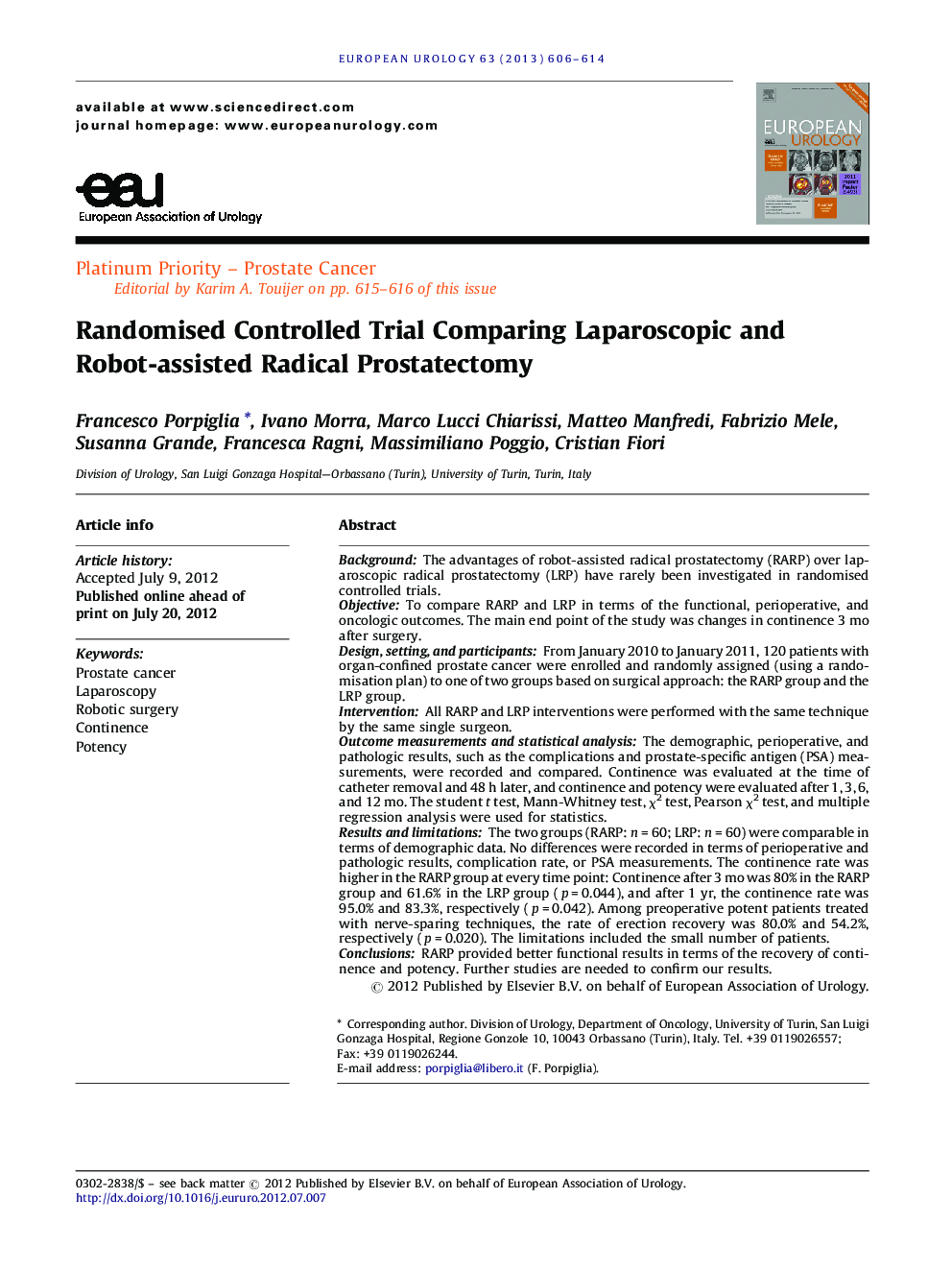| Article ID | Journal | Published Year | Pages | File Type |
|---|---|---|---|---|
| 3923939 | European Urology | 2013 | 9 Pages |
BackgroundThe advantages of robot-assisted radical prostatectomy (RARP) over laparoscopic radical prostatectomy (LRP) have rarely been investigated in randomised controlled trials.ObjectiveTo compare RARP and LRP in terms of the functional, perioperative, and oncologic outcomes. The main end point of the study was changes in continence 3 mo after surgery.Design, setting, and participantsFrom January 2010 to January 2011, 120 patients with organ-confined prostate cancer were enrolled and randomly assigned (using a randomisation plan) to one of two groups based on surgical approach: the RARP group and the LRP group.InterventionAll RARP and LRP interventions were performed with the same technique by the same single surgeon.Outcome measurements and statistical analysisThe demographic, perioperative, and pathologic results, such as the complications and prostate-specific antigen (PSA) measurements, were recorded and compared. Continence was evaluated at the time of catheter removal and 48 h later, and continence and potency were evaluated after 1, 3, 6, and 12 mo. The student t test, Mann-Whitney test, χ2 test, Pearson χ2 test, and multiple regression analysis were used for statistics.Results and limitationsThe two groups (RARP: n = 60; LRP: n = 60) were comparable in terms of demographic data. No differences were recorded in terms of perioperative and pathologic results, complication rate, or PSA measurements. The continence rate was higher in the RARP group at every time point: Continence after 3 mo was 80% in the RARP group and 61.6% in the LRP group (p = 0.044), and after 1 yr, the continence rate was 95.0% and 83.3%, respectively (p = 0.042). Among preoperative potent patients treated with nerve-sparing techniques, the rate of erection recovery was 80.0% and 54.2%, respectively (p = 0.020). The limitations included the small number of patients.ConclusionsRARP provided better functional results in terms of the recovery of continence and potency. Further studies are needed to confirm our results.
